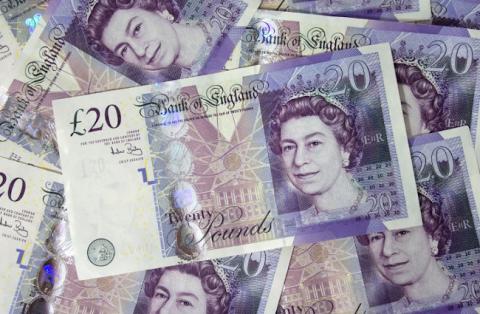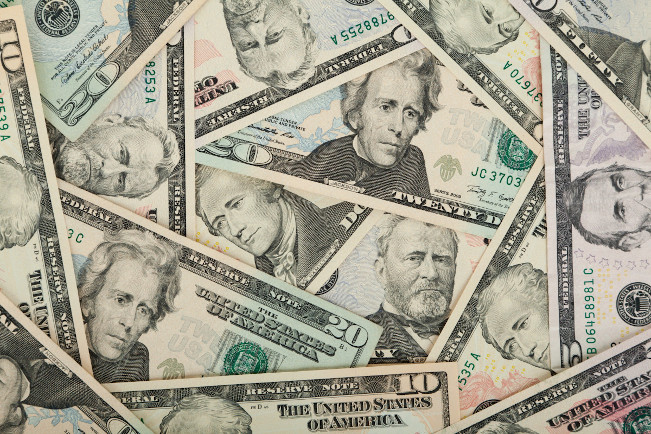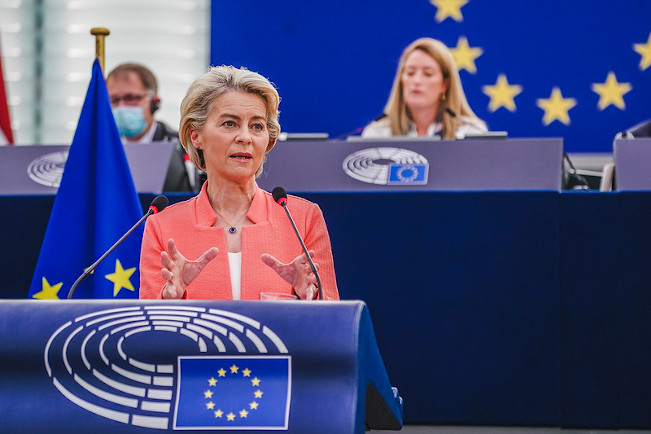Financial Crisis in the Making: Rising Oil and the Crashing Pound

As Europe enters winter, rising fuel prices, general inflation, and falling currency values threaten to cripple its economy. Last month’s near-crash of the British pound may be the beginning of a global economic crisis.
The U.S. dollar has hit a 20-year high, causing other global currencies to decline to record lows. While currencies from the euro, to the Japanese yen, and the Chinese yuan, to the Turkish lira and the Mongolian tugrik are slipping, last month’s near-crash of the British pound represents the first crisis of a major, international currency, which could signal a coming global economic cataclysm.
On September 26th, the British pound lost nearly 5% of its value overnight, hitting a 37-year low. After months of continual devaluation, the pound is now worth 21% less than it was at the beginning of the year. The pound’s sharp decline has been blamed on the release of Britain’s new mini-budget, which included major tax cuts, energy price caps, and direct payments to citizens to help them cope with record levels of inflation. The plan called for between $100 billion and $200 billion of additional spending. Government cash injections during a crisis will exacerbate inflation. Increased government spending will also drive up the national debt, which is already in excess of 85% of GDP.

The announcement of this reckless spending was the final straw, sending the pound into freefall. In order to rescue the currency, the Bank of England went on the open market, using foreign currency reserves to buy up $73 billion worth of pounds. The UK foreign currency reserves have been in steady decline for the past 12 months, dropping to $171 billion in September.
Other countries are following suit, taking inflationary measures to try and stimulate the economy, while spending down their reserves, to support their currencies. In September, Japan spent nearly $20 billion to buoy the yen. India spent $75 billion saving the rupee. And Beijing is planning a major currency intervention to bring the yuan back to normalcy.
Turkey instituted a rate cut in August, in spite of inflation, which had already reached 80%. The highest inflation has been seen in the transportation sector, where prices rose 116.87%. Between 2021 and 2022, the lira lost about 60% of its value against the dollar. As soon as news of the latest rate cut was announced, the lira dropped even further against the dollar. The central bank is also removing dollars from reserves to purchase lira. Foreign currency reserves stood at a 20-year low of $74 billion, back in June. They experienced a surge in August, upon receipt of money from Russia. Now, the central bank is chipping away at the supply again, liquidating about $3 billion in a single week, leaving a September total of $68 billion.

The euro, the second most important currency, has lost 16% of its value, against the dollar, over the past year. The Dutch TTF, the wholesale gas benchmark for Europe is currently eight times higher than US domestic natural gas prices. This makes the lives of citizens more expensive, while also making it difficult for European companies to compete globally. The European Central Bank is planning $388 billion in support spending to counter rising energy prices in the EU. This will increase inflation while increasing debt.
Spending down foreign currency reserves is problematic because an energy crisis is at the core of the problems faced by both Britain and Europe, but energy is priced in dollars. So, in addition to the price of oil being higher, the local currencies are lower than normal. This means that Britons and Europeans are feeling the bite more than Americans. About 9% of the increase in the cost of oil in the UK is actually attributable to a falling currency. And this applies not only to energy, but all commodities and most imported goods. Americans are experiencing food inflation, but in Britain, 46% of food is imported.
Inflation in Europe hit 10%. As prices climb, European countries are trying to rein in inflation, but in many cases, the steps they are taking are either ineffective or destructive. In order to fight inflation, which already stands at 18%, Belarus President Lukashenko has banned price increases. Since a ban on price rises has no impact on costs, suppliers will just refuse to sell at the lower price and the country will be faced with shortages.
![]()
In Germany, where energy costs have increased by 62%, the government has offered citizens a $195 billion relief package, which included a price cap and direct payments. France, Italy, Spain, and the EU are all preparing caps and direct payments to citizens totaling hundreds of billions of dollars, across the Eurozone. The EU and other governments are also calling for reductions in power usage, which will ultimately result in decreased manufacturing output and job cuts.
The European private sector is also planning to take some inflationary action in the form of salary increases and bonuses. Unions in Italy, France, and elsewhere are calling for additional raises, while some of the largest employers, such as Carefour and Stellantis are already on board. Between the higher energy cost, depreciating currency, and higher price of inputs and raw materials, most companies in the Eurozone have seen their costs rise by 43% this year. And this was before the planned pay increases.
The higher costs are being passed on to consumers in the form of higher prices, but retailers like H&M are warning that rising prices are already curtailing demand. Analysts at PineBridge Investments see Europe sinking into a full-on recession in the fourth quarter and possibly a general collapse, owing to a vicious cycle of inflation and rising wages.

The IMF is forecasting that Germany may see a contraction of GDP, below baselines levels, of 1.5% in 2022 and 2.7% in 2023. A contraction in Germany could spread to other Eurozone countries. When it comes to adjusting fiscal and economic policy, in order to address a crisis, European governments have fewer tools at their disposal, than does the U.S. government, because of the common currency, the common central bank, and a host of laws and agreements, preventing countries from taking independent action.
The ZEW Indicator of Economic Sentiment has determined that consumer confidence across Europe is at its lowest level since the sovereign debt crisis of 2011. The trade deficit, by contrast, is at an all-time high. And the Purchasing Managers Indices (PMIs), a measure of industrial and service activity in the economy, is showing signs of a contraction.
The U.S. Fed has raised interest rates and is expected to raise them again, in order to bring down inflation. Meanwhile, central banks around the world are following suit. The raising of interest rates by central banks in developed countries, however, is having spillover effects in developing countries, which will only become more negative and destructive as additional rate hikes are expected. These countries will find it difficult to import, difficult to pay their foreign debt, and will see their own currencies depreciate. Resource-dependent countries are also seeing a decrease in demand for their exports, as industrial activity slows in the developed world.
The U.S is in less peril than other countries, largely because the dollar is the world’s currency, and also because the U.S. is more energy and food self-sufficient than most countries. An additional benefit to the U.S. is that a rising dollar attracts foreign investment. The negative impact of a soaring greenback, however, is that American exports become expensive in other countries.
And, at home, imports become cheaper, discouraging Americans from purchasing domestic products. It is estimated that for each 1% increase in the value of the dollar the earnings of S&P 500 companies declines by about 0.5%. And while most American will not shed tears for the economic losses of big companies, each decrease in profit correlates with a reduction in the number of jobs.
Author Bio:
Antonio Graceffo, a Highbrow Magazine contributor, is a Ph.D. and also holds a China-MBA from Shanghai Jiaotong University. He works as an economics professor and China economic analyst, writing for various international media. Some of his books include: The Wrestler’s Dissertation, Warrior Odyssey, Beyond the Belt and Road: China’s Global Economic Expansion, and A Short Course on the Chinese Economy.
For Highbrow Magazine
Image Sources:
--Pxhere (Creative Commons)
--Marco Verch Professional Photographer (Flickr, Creative Commons)
--Pxhere (Creative Commons)
--Rawpixel (Creative Commons)
--Jean Beaufort (Publicdomainpictures, Creative Commons)
--European Parliament (Flickr, Creative Commons)































































































































































































































































































































